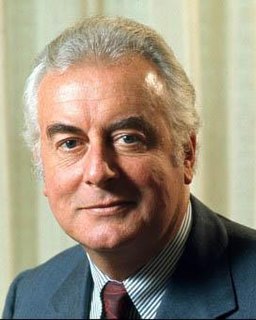
Edward Gough Whitlam was the 21st prime minister of Australia, serving from 1972 to 1975. The longest-serving leader of the Australian Labor Party (ALP), he was removed as prime minister after controversially being dismissed by the governor-general of Australia, Sir John Kerr, at the climax of the 1975 Australian constitutional crisis. Whitlam is the only Australian prime minister to have been removed from office in this manner.

Harold Edward Holt was an Australian politician who served as the 17th prime minister of Australia from 1966 until his presumed death in 1967. He held office as leader of the Liberal Party.

Arthur Augustus Calwell KCSG was an Australian politician who served as the leader of the Labor Party from 1960 to 1967. He led the party to three federal elections.

Kim Edward Beazley was an Australian politician who served as a member of the House of Representatives from 1945 to 1977, representing the Labor Party. He was Minister for Education in the Whitlam Government from 1972 to 1975.
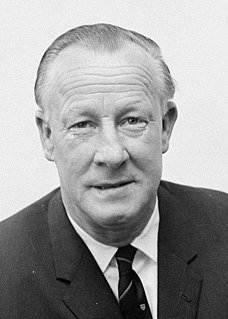
Lance Herbert Barnard AO was an Australian politician and diplomat. He was the deputy leader of the Australian Labor Party (ALP) from 1967 to 1974 and held senior ministerial office in the Whitlam Government, most notably as Deputy Prime Minister of Australia from 1972 to 1974.

Clyde Robert Cameron,, was an Australian politician. He was a member of the Australian Labor Party (ALP) and served in the House of Representatives from 1949 to 1980, representing the Division of Hindmarsh. He was a leading figure in the Australian labour movement and held ministerial office in the Whitlam Government as Minister for Labour (1972–1974), Labor and Immigration (1974–1975), and Science and Consumer Affairs (1975).

The 1963 Australian federal election was held in Australia on 30 November 1963. All 122 seats in the House of Representatives were up for election. The incumbent Liberal–Country coalition government, led by Prime Minister Sir Robert Menzies, won an increased majority over the opposition Labor Party, led by Arthur Calwell. This was the only time that a Federal Government won a seventh consecutive term in office.
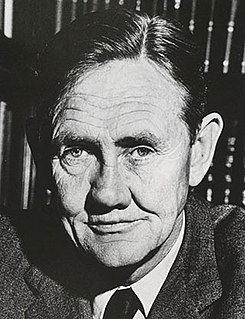
The 1969 Australian federal election was held in Australia on 25 October 1969. The incumbent Liberal–Country coalition government, led by Prime Minister John Gorton, won the election with a severely diminished majority over the opposition Labor Party, led by Gough Whitlam despite losing the two party popular vote. Both major parties had changed their leaders in the run-up to the election, the first time this had occurred since 1946. This was the first and only time that a Federal Government won a ninth consecutive term in office.

The 1966 Australian federal election was held in Australia on 26 November 1966. All 124 seats in the House of Representatives were up for election. The incumbent Liberal–Country coalition government, led by Prime Minister Harold Holt, won an increased majority over the opposition Labor Party, led by Arthur Calwell. This was the first and only time that a Federal Government won an eighth consecutive term in office.

The Holt Government was the federal executive government of Australia led by Prime Minister Harold Holt. It was made up of members of a Liberal-Country Party coalition in the Australian Parliament from 26 January 1966 – 19 December 1967.

A leadership ballot in the Australian Labor Party, the opposition party in the Parliament of Australia, was held on 7 March 1960. It followed the retirement of previous leader H. V. Evatt. Calwell received 42 votes to Reg Pollard's 30 in a caucus ballot. Future Prime Minister Gough Whitlam would defeat Eddie Ward to become Calwell's deputy.

The Liberal Party of Australia held a leadership spill on 7 November 1969, following the party's poor performance at the federal election on 25 October. Prime Minister John Gorton was re-elected as the party's leader, defeating challengers William McMahon and David Fairbairn.

A leadership spill in the Australian Labor Party, the party of opposition in the Parliament of Australia, was held on 27 April 1966. It followed the long awaited challenge by party deputy-leader Gough Whitlam against incumbent leader Arthur Calwell. Calwell received 49 votes to Whitlam's 25 in a caucus ballot. After claiming victory Calwell then announced that if Labor was defeated at the impending 1966 federal election, he would not stand for the leadership again.
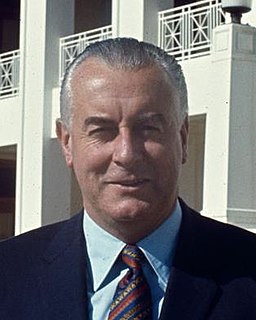
A leadership spill in the Australian Labor Party, the party of opposition in the Parliament of Australia, was held on 30 April 1968. It followed leader Gough Whitlam's decision to resign the leadership following the party executives refusal to seat new Tasmanian delegate Brian Harradine, to which Whitlam demanded a vote of confidence from his caucus. Whitlam received 38 votes to left-winger Jim Cairns' 32 in an unexpectedly close poll.
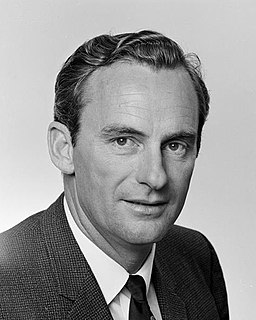
A leadership election of the Australian Labor Party (ALP), then the opposition party in the Parliament of Australia, was held on 22 December 1977. Following the resignation of Gough Whitlam former Treasurer Bill Hayden was elected Labor's new leader winning 36 votes to 28 over Lionel Bowen who was then elected deputy leader.

A leadership spill of the Australian Labor Party (ALP), then the opposition party in the Parliament of Australia, was held on 31 May 1977. Former Treasurer Bill Hayden unsuccessfully challenged Labor leader Gough Whitlam. Whitlam was narrowly re-elected by 32 votes to 30 leading him to later refer to many in his caucus as 'out of touch'.
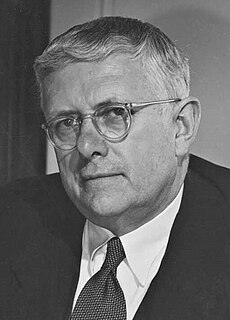
A leadership election in the Australian Labor Party, then the opposition party in the Parliament of Australia, was held on 20 June 1951. It saw the election of Leader H. V. Evatt as leader following the death of sitting leader Ben Chifley.

A leadership spill of the Australian Labor Party (ALP), then the opposition party in the Parliament of Australia, was held on 16 February 1956.

A leadership spill in the Australian Labor Party, the party of opposition in the Parliament of Australia, was held on 27 January 1976, the date of the first Caucus meeting following the 1975 election.

A leadership spill of the Australian Labor Party (ALP), then the opposition party in the Parliament of Australia, was held on 16 February 1959.



















